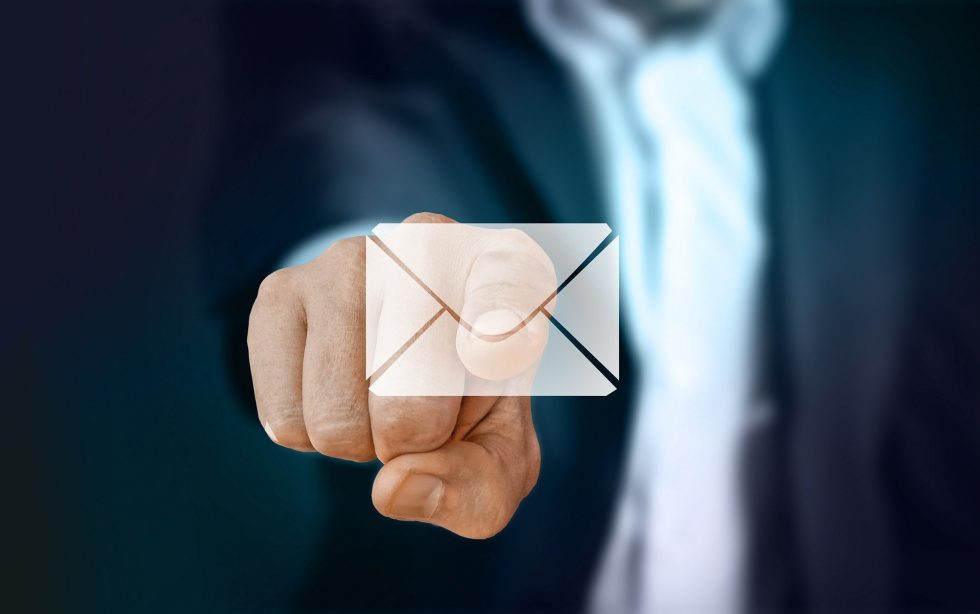We’d welcome the opportunity to talk through your challenges
Whether you’d like some more information, or have a project you want to discuss with us, please get in touch – we’d love to hear from you.

By Amy Andrew, Writer.
Email marketing has evolved from SPAM to highly-personalised messages. Read on for more about the history of this effective way to connect with customers.
There was a lot happening around the world in 1971. China was admitted to the UN, Disney World opened, women in Switzerland were granted the vote, Disney World opened, Quatar became independent from the UK, Disney World opened.
Okay, you get the point. And in among all these huge changes, a gentleman called Ray Tomlinson sent the first email. Given that people were very concerned about issues like coining the term “Thatcher the Milk Snatcher” and fathoming decimalisation at the time, he didn’t garner the public attention he arguably should have.
Just seven years later, a certain Gary Thuerk had a bit of a brain wave. A marketing manager at Digital Equipment Corp, he got the ball rolling for commercial email by sending the first mass email.
Maybe it was an action triggered by the fact the world’s population had just hit 4.4 billion (so he had a lot more customers to speak to). Or maybe Gary just fancied trying something different after the last mass print catalogue mailing. Whatever the reason, it resulted in $13 million worth of sales for DEC machines. And that meant it wasn’t long before others started to cotton-on to the potential of this new communication medium.
A lot of important things happened in the 1990s (some seriously cool members of the asabell team were born, for starters). And the decade kicked off email marketing with a bang when the internet was born in 1991.
The next invention this over-achiever of a decade produced? The smartphone — in 1992. Then, in 1996, it was time for the launch of Hotmail — the first web-based email service, and the platform which introduced personal email accounts (before that, you had to have a business or a University one).
Add these together and what have you got? The potential for anyone with access to a computer and internet connection to receive an email. And receive them they did. Email marketing soared and the aim of the game was to get as many emails on people’s screens as possible. In fact, just two short years later, this supposed boon for business was turning into a crisis for customers, as SPAM was born.
Yes, with SPAM and associated viruses sweeping through inboxes around the world, lawmakers began to play the age-old game of cat and mouse with technology. The US and Europe led the way with anti-spam legislation, and naughty marketing companies began to feel the pinch.
It was also around this time that companies like AOL and Windows Live began to feedback on SPAM complaints and set up recipient feedback schemes. It looked like this could be the end for mass email marketing…
Luckily for smart marketers who still wanted an engaging way to connect with customers via email, there was hope. Way back in 2001 the first behavioural email (triggered automatically by a user’s individual behaviour) had been sent. It’s a more personal form of email, as it’s targeted to the particular customer, reminding them, for example, of products they recently looked at.
This is one of the advances that meant personalisation became a key factor in email campaigns in the 2010s. After all that SPAM legislation, the rise of savvy users and the wealth of customer data available through various platforms, it was time for marketing to focus more on targeted campaigns. Hence the ‘Hi Amy, how’s that winter weather treating you? Remember that Caribbean holiday you were browsing yesterday…?’
But the real significance of this technology for email marketing wasn’t fully capitalised on until almost fifteen years later. Along with personalisation, phones are the other hallmark of today’s email marketing. In 2011, the year Apple announced that it had sold over 100 million iPhones, over 75 per cent of iPhone users accessed emails via this device.
And by 2012, more than 40 per cent of all marketing emails were opened on a mobile device. Suddenly, it became very important to make sure that your emails rendered effectively on a phone — or you were going to miss out on communicating with almost half of your market.
Today, email marketing is a great way to connect with customers, and 72 per cent of marketers say that it helps to develop loyal and active customers. Nowadays, a wealth of information about customers and their preferences means email lists can be easily segmented into relevant categories. So marketers can send highly-targeted emails that always hit their mark. In fact, conversion rates as high as 50 per cent can be seen across marketing email campaigns that take advantage of behavioural automation.
So, to find out more, and be part of the ever-evolving world of email marketing (like your customers), get in touch and see how we can help
Whether you’d like some more information, or have a project you want to discuss with us, please get in touch – we’d love to hear from you.
"*" indicates required fields